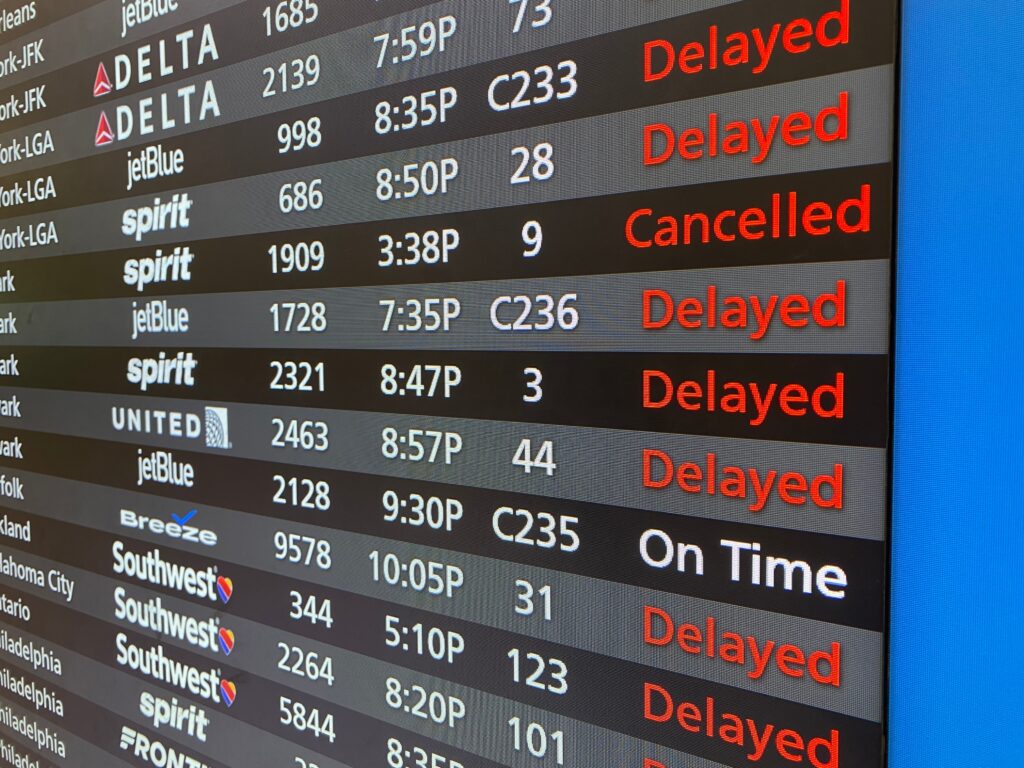Powerful winds swept through Beijing and northern China on Saturday, forcing airports, subways, and tourist sites to shut down. The intense windstorm disrupted the lives of millions and marked the most severe event of its kind in over half a century.
By 11:30 a.m. local time, officials had canceled 838 flights at Beijing Capital International Airport and Daxing International Airport, according to a report by Reuters. Train lines were also suspended, including the airport express subway and several high-speed routes connecting major cities.
The storm, fueled by a cold air mass from Mongolia, brought wind gusts reaching up to 93 miles per hour (150 kilometers per hour). China’s weather agencies noted that this is the strongest wind event to hit Beijing in more than 50 years.
City on Alert as Storm Rages
The China Meteorological Administration issued an orange alert—the second-highest warning level in the country’s four-tier system. Weather experts warned that winds could reach level 13 on China’s wind scale, a category known to cause extreme damage.
In response, Beijing authorities closed all public parks, historical sites, and outdoor attractions. More than 300 trees had already fallen across the city by mid-morning. Emergency crews worked to cut or reinforce older trees to prevent further damage.
Officials urged the city’s 22 million residents to stay indoors unless absolutely necessary. Streets appeared nearly empty, as residents heeded the warnings. Several vehicles were damaged by debris or falling branches, but so far, no deaths or injuries have been reported.
“The air feels heavy, and people are nervous,” said one local resident. “But the worst seems to be passing.”
Travelers Stranded as Flights and Trains Halt
Travelers across the region faced major disruptions. In addition to the flight cancellations, trains in and out of Beijing were delayed or suspended.
A businessman from Zhejiang province, near Shanghai, told local media that he was stuck in Beijing after his flight was grounded. “I was supposed to fly out last night, but every flight was canceled. I’m waiting to see when I can rebook,” he said.
The airport authority advised travelers to check their flight status before heading to the airport. Long lines formed at airline counters as passengers tried to reschedule their journeys.
Sand and Dust Add to the Crisis
The storm didn’t just bring strong winds. It also carried sand and dust from the north, reducing visibility and making air quality worse. Spring is usually sandstorm season in northern China, but experts say the storms are becoming more intense due to climate change.
Meteorologist Zhang Wei explained, “The cold vortex from Mongolia triggered this event. As it moved south, it brought not just wind but sand and dust. The frequency and power of such storms have increased in recent years.”
Beijing experienced similar sandstorms in March 2021, when orange skies covered the city for days. But this weekend’s winds were stronger and more damaging.
Infrastructure Tested, Emergency Response Activated
City workers rushed to secure infrastructure, cover loose materials, and clear debris. Utility companies prepared for power outages, though no widespread blackouts were reported.
Hospitals stayed on high alert to respond to any injuries. Ambulance teams and fire departments were put on standby in case of emergencies caused by flying debris or falling structures.
Government offices issued safety guides and urged citizens to avoid balconies, open windows, or park under trees and signs.
Climate Change a Growing Factor
Scientists warn that climate change is likely increasing the number and strength of extreme weather events in China. Rising temperatures and shifting wind patterns can lead to stronger storms, longer droughts, and more frequent sandstorms.
“We are seeing new weather records being broken more often,” said environmental researcher Liu Min. “The pattern of more extreme winds in Beijing fits into this larger trend.”
Authorities continue to monitor the storm, which is expected to move eastward by Sunday, bringing relief to the capital. However, nearby provinces like Hebei and Tianjin are now on alert.
This windstorm stands as a stark reminder of nature’s power and the need for cities to prepare for more intense weather patterns. While no lives were lost, the event shook Beijing and disrupted life for millions.


